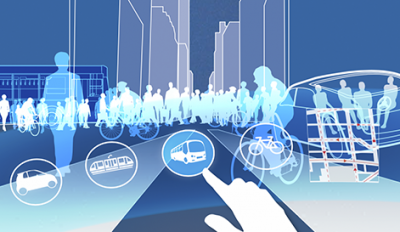Planners Missing Driverless Revolution
Burney Simpson
Urban planners are finding it’s harder than ever to prepare for the future, even though it’s only a few years down the road.
This week transportation experts in Washington, D.C., released a report calling for more uniform regulations of such firms as Uber, Lyft and other transportation network companies (TNCs) that have upended the taxi industry in cities nationwide.
Uber provided more than 1 million rides daily worldwide in June, and Lyft now claims more than 100,000 drivers operating in 60 U.S. cities.
The report “Between Public and Private Mobility: Examining the Rise of Technology-Enabled Transportation Services” was released by the Transportation Research Board, and sponsored by National Academies of Sciences, Engineering, and Medicine.
The TNCs need consistent regulations across a state or region addressing such topics as driver background checks, liability insurance, and accessibility for the disabled and elderly, according to the report.
The problem for the experts is that the TNCs could be upended by automated and connected vehicle technology by 2020.
Last January Uber began hiring a reported 40 researchers from Carnegie Mellon’s National Robotics Engineering Center to develop driverless vehicles. Execs from Nissan and Ford have predicted autonomous cars will be available to the public in 2020.
So why spend years fighting for uniform regulations when the givens of 2015 will be gone by 2020? (OK, 2025).
“Driverless technology will be here in five to 10 years. Many of the components are already here,” said James Zepp, first vice president of the Montgomery County Civic Federation, a community group in a Maryland county neighboring Washington, D.C.
The Washington metro area has the worst traffic congestion in the nation, according to the Texas A&M Transit Institute, and government planners have introduced multi-year projects that include a new subway line and a combined bus rapid-transit system.
But Zepp is skeptical of the proposals.
“These are multi-billion dollar, long-term investments that are potentially irrelevant,” he said.
Zepp noted that only 6 percent of the 68 largest cities in the country had considered driverless transportation as part of their planning process, according to a November report from the National League of Cities.
MISSING THE REVOLUTION
The League’s “City of the Future: Technology & Mobility” found that a mere 3 percent of city planners had even included the TNCs in their transportation proposals. Instead, 50 percent offered “explicit plans for new highway construction.”
The League reports that rapid technological advances, demographic shifts, and changes in public preferences are impacting how people travel in and around cities.
But many planners are missing the revolution.
There are “widening gaps between innovation in the private sector, the expressed preferences of citizens and the visions of city planners regarding transportation investment. The mobility environment in cities is rapidly shifting … (but) a majority of cities do not have concentrated efforts to prepare for new transportation innovations,” the League found.
Image ‘City of Future’ from National League of Cities.

